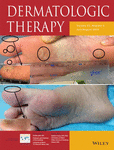Comparative split-face study of durational changes in hyaluronic acid fillers for mid-face volume augmentation
Funding information: Merz Pharmaceuticals GmbH
Abstract
Subsequent changes after injection should be considered when determining the precise volume of injected dermal filler. Several studies have used scoring systems to evaluate facial volumes; however, these scoring systems are not particularly objective. This present study aimed to evaluate the volumetric changes over time on three-dimensional (3D) images and the maintenance potential of various hyaluronic acid (HA) fillers used for mid-face volume augmentation. This split-face clinical study included nine Korean subjects who each received a mid-facial injection of the test filler (B) on one side and a random control filler (J, R, or Y) on the contralateral side. Global, photographic, and 3D scanning assessments were conducted at baseline and after 30 min, 3 days, and 2, 4, 12, and 24 weeks. In all nine cases, the 3D images revealed the largest differences in height where the test filler (B) was injected. The results of subjective scoring systems correlated with the results of 3D imaging. The volumes of monophasic fillers (B and J) were maintained for longer periods of time than those of biphasic fillers (R and Y). The B filler yielded excellent volumizing and spreading effects and good injectability. This filler would be suitable for injection into high-pressure areas, such as the lateral cheek, chin, and nasolabial fold. Moreover, the 3D imaging analysis provided objective and digitized data. The present authors hope that their data will allow physicians to better understand the durational changes in HA fillers and, thus, provide accurate predictions to their patients.
CONFLICT OF INTERESTS
K.Y. Park is a consultant and speaker for Medi-Tox Inc., Korea, Deawoong Pharmaceuticals Inc., Korea and Merz Asia Pacific. C.S. Youn is a consultant and speaker for Deawoong Pharmaceuticals Inc., Korea and Merz Asia Pacific.




